Multi-Instrument Inter-Calibration (MIIC) System
Abstract
:1. Introduction
2. Background
3. MIIC Architecture
3.1. Data System Architecture
- Support inter-calibration and inter-comparison science studies
- Access matched measurements within large datasets distributed across multiple data centers
- Enable development of distributed collaborative data systems
- Demonstrate the benefit of custom OPeNDAP server-side functions
- Provide web-based tools to simplify data access for GSICS and instrument Cal-Val teams
3.2. Server-Side Functions
4. MIIC Services and Results
4.1. Event Prediction Services
4.2. Data Acquisition Services
4.2.1. LEO-LEO Data Acquisition
4.2.2. LEO-GEO Data Acquisition
4.2.3. Surface Site Data Acquisition
4.3. Analysis Services
- Analysis tasks may access all data retrieved by an ICPlan
- Analysis tasks may be chained together
- Analysis tasks may accept user input in a format defined by the plugin
- Statistics calculations are memory intensive
- Statistics are generated using JAIDA
5. Conclusions
Acknowledgments
Author Contributions
Conflicts of Interest
References
- Chandler, G.; Hewison, T.; Fox, N.; Wu, X.; Xiong, X.; Blackwell, W. Overview of Intercalibration of satellite instruments. IEEE Trans. Geosci. Remote Sens. 2013, 51, 1056–1080. [Google Scholar] [CrossRef]
- OPeNDAP Hyrax Server. Available online: http://www.opendap.org/ (accessed on 27 October 2016).
- Space-Track Satellite Two Line Element (TLE). Available online: https://www.space-track.org/ (accessed on 27 October 2016).
- Wielicki, B.; Young, D.; Mlynczak, M.; Thome, K.; Leroy, S.; Corliss, J.; Anderson, J.; Ao, C.; Bantges, R.; Best, F.; et al. Achieving climate change absolute accuracy in orbit. Bull. Am. Meteorol. Soc. 2013. [Google Scholar] [CrossRef]
- Uprety, S.; Cao, C.; Xiong, X.; Blonski, S.; Wu, A. Radiometric intercomparison between Suomi-NPP VIIIRS and Aqua MODIS reflective solar bands using simultaneous nadir overpass in the low latitudes. J. Atmos. Ocean. Technol. 2013, 30, 2720–2736. [Google Scholar] [CrossRef]
- Loeb, N.; Priestley, K.; Kratz, D.; Geier, E.; Green, R.; Wielicki, B.; Hinton, P.; Nolan, S. Determination of unfiltered radiances from the Clouds and Earth’s Radiant Energy System (CERES) instrument. J. Appl. Meteorol. 2001, 40, 822–835. [Google Scholar] [CrossRef]
- Loeb, N.; Manalo-Smith, N.; Su, W.; Shankar, M.; Thomas, S. CERES Top-of-atmosphere earth radiation budget climate data record: Accounting for in-orbit changes in instrument calibration. Remote Sens. 2016. [Google Scholar] [CrossRef]
- Haeffelin, M.; Wielicki, B.; Duvel, J.; Priestley, K. Inter-calibration of CERES and ScaRaB Earth radiation budget datasets using temporally and spatially collocated radiance measurements. Geophys. Res. Lett. 2001, 28, 167–170. [Google Scholar] [CrossRef]
- Priestley, K.; Wielicki, B.; Green, R.; Haeffelin, M.; Lee, R.; Loeb, N. Early radiometric validation results of the CERES flight model 1 and 2 instruments onboard NASA’s terra spacecraft. Adv. Space Res. 2002, 30, 2371–2376. [Google Scholar] [CrossRef]
- Roithmayr, C.; Lukashin, C.; Speth, P.; Kopp, G.; Thome, K.; Wielicki, B.; Young, D. CLARREO approach for reference intercalibration of reflected solar sensors: On-orbit data matching and sampling. IEEE Trans. Geosci. Remote Sens. 2014, 52, 6762–6773. [Google Scholar] [CrossRef]
- NRC. Earth Science and Applications from Space: National Imperatives for the Next Decade and Beyond; The National Academy Press: Washington, DC, USA, 2007. [Google Scholar]
- Highcharts. Available online: http://www.highcharts.com/ (accessed on 27 October 2016).
- JAIDA—AIDA in Java, FreeHEP Java Libraries. Available online: http://java.freehep.org (accessed on 27 October 2016).
- Spring Framework. Available online: https://projects.spring.io/spring-framework/ (accessed on 27 October 2016).
- Hibernate. Available online: http://hibernate.org/ (accessed on 27 October 2016).
- C++ Mathematical Expression Toolkit Library (ExprTk). Available online: http://www.partow.net/programming/exprtk/ (accessed on 27 October 2016).
- Vallado, D.; Crawford, P.; Hujsak, R.; Kelso, T. Revisiting spacetrack report #3. In Proceedings of the AIAA/AAS Astrodynamics Specialist Conference, Keystone, CO, USA, 21–24 August 2006.
- USGS Remote Sensing Technology. Available online: http://calval.cr.usgs.gov/ (accessed on 27 October 2016).
- Smith, D.; Cox, C. (A)ATSR solar channel on-orbit radiometric calibration. IEEE Trans. Geosci. Remote Sens. 2013, 51, 1370–1382. [Google Scholar] [CrossRef]
- NOAA Climate Prediction Center. Available online: http://www.esrl.noaa.gov/ (accessed on 27 October 2016).


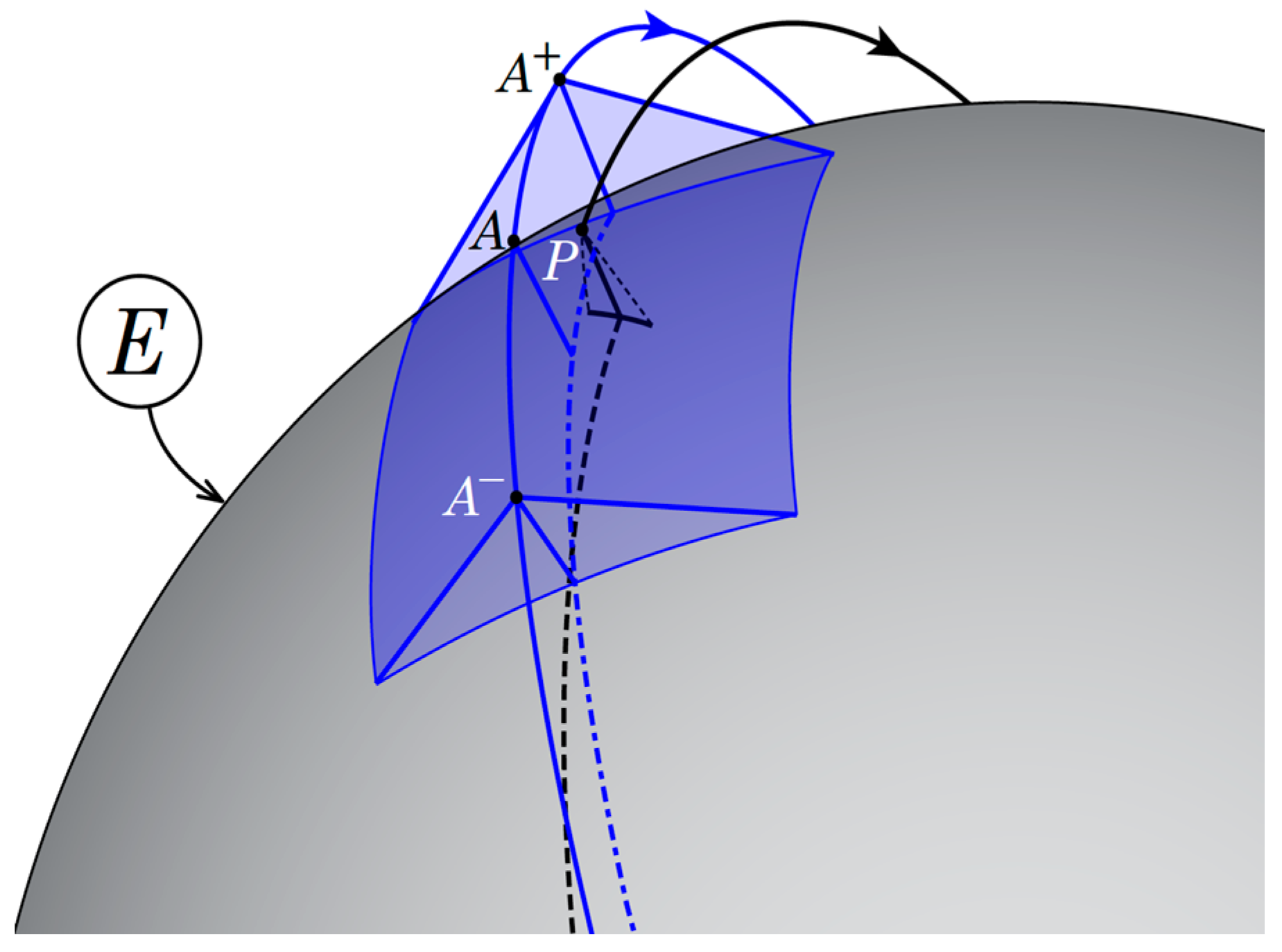

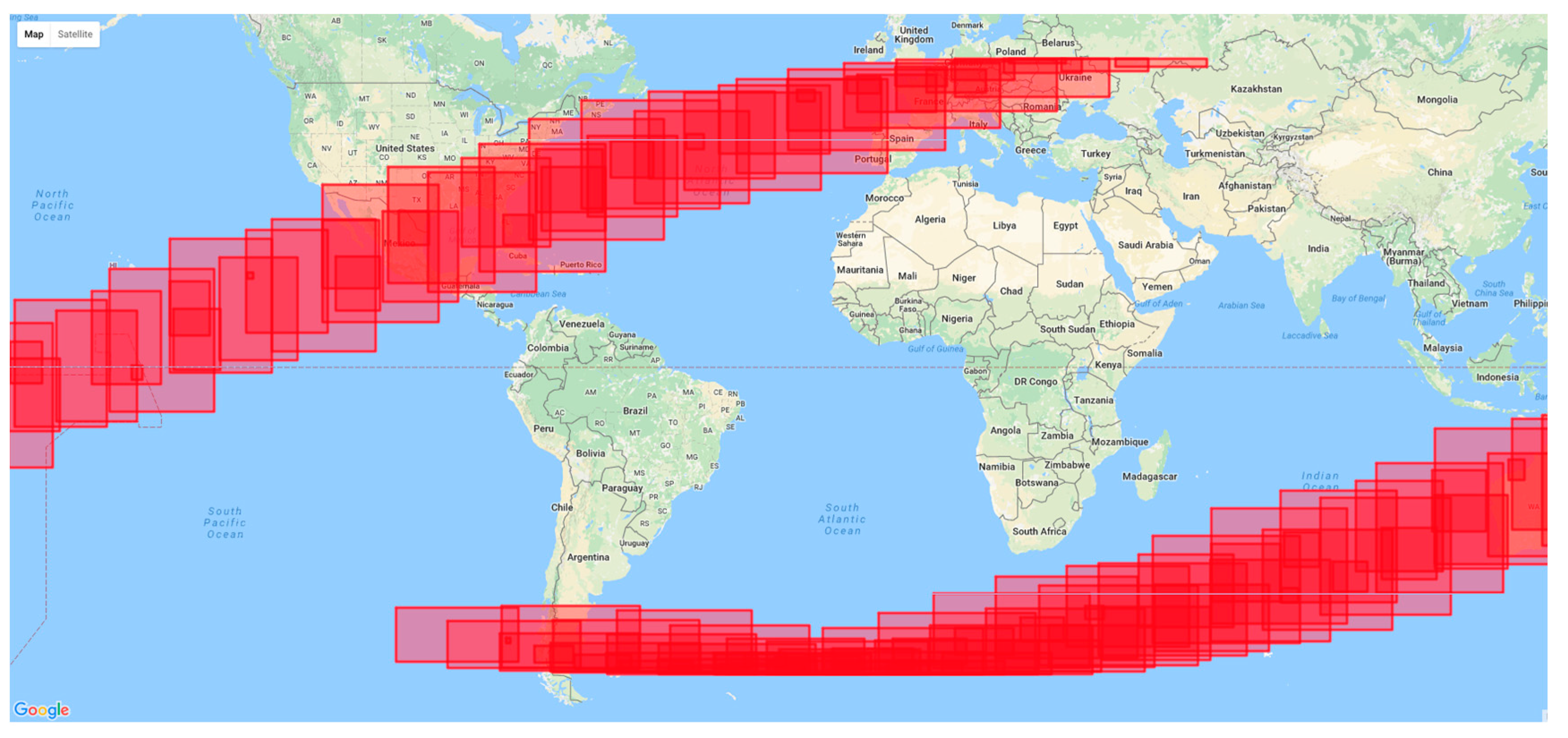
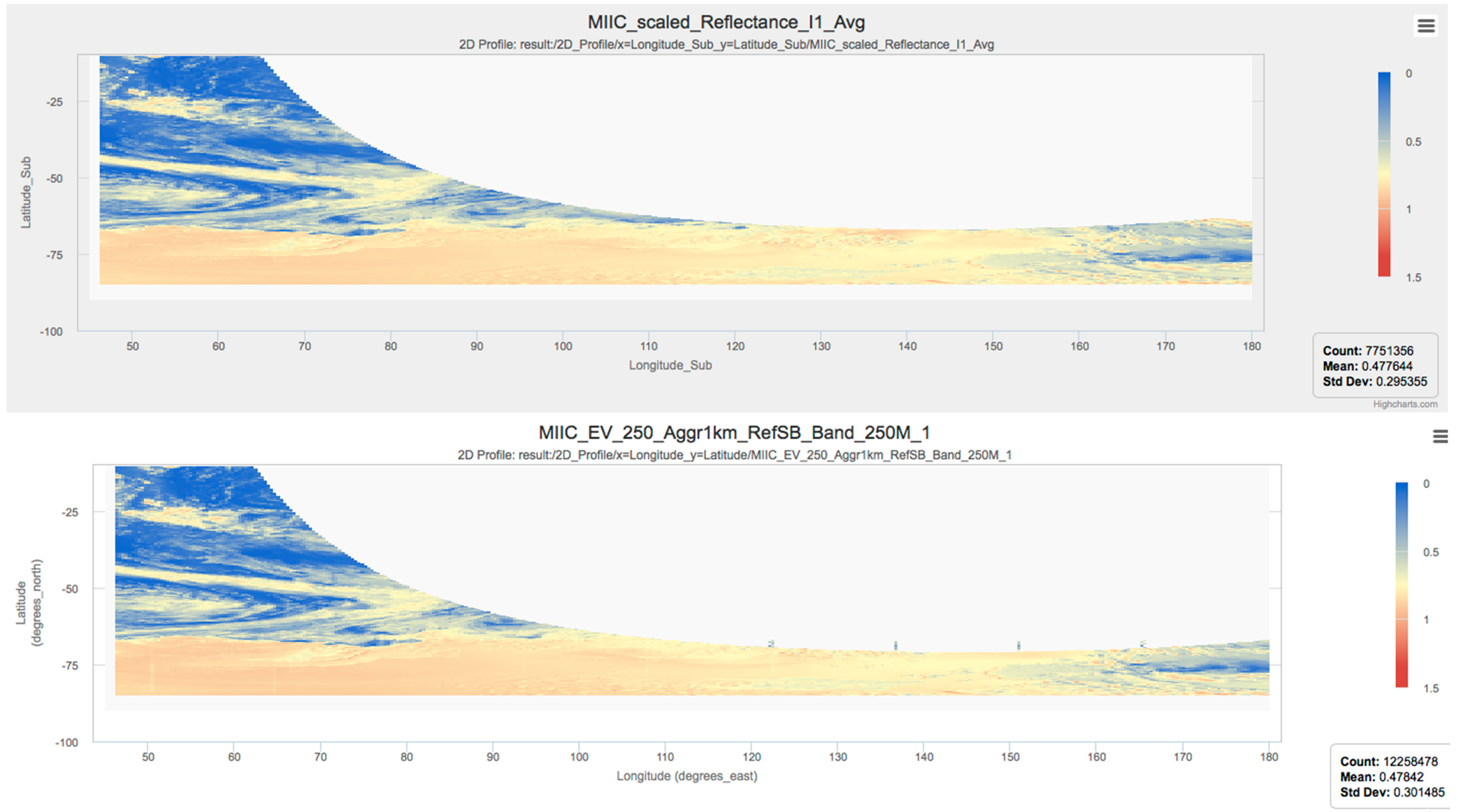
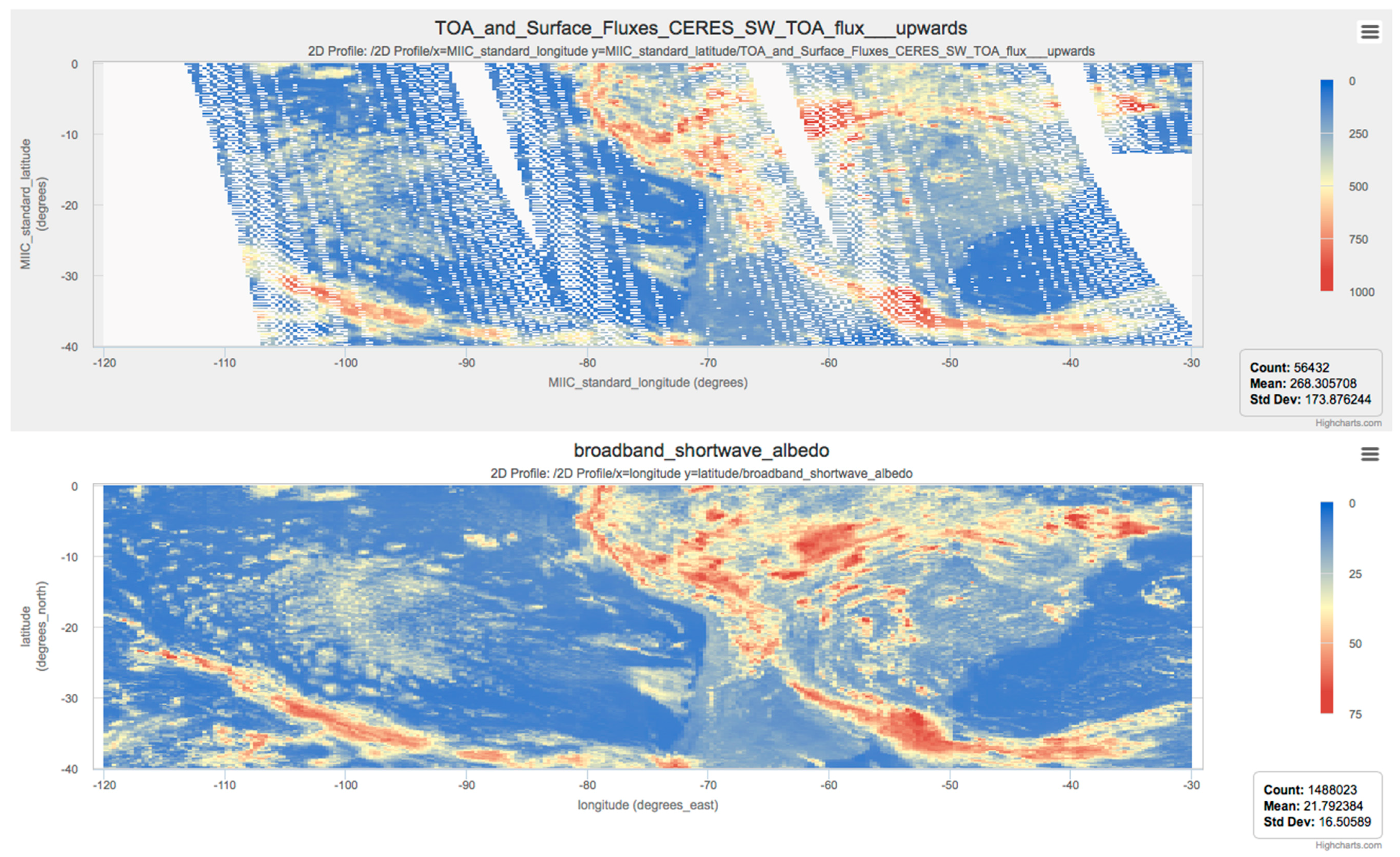
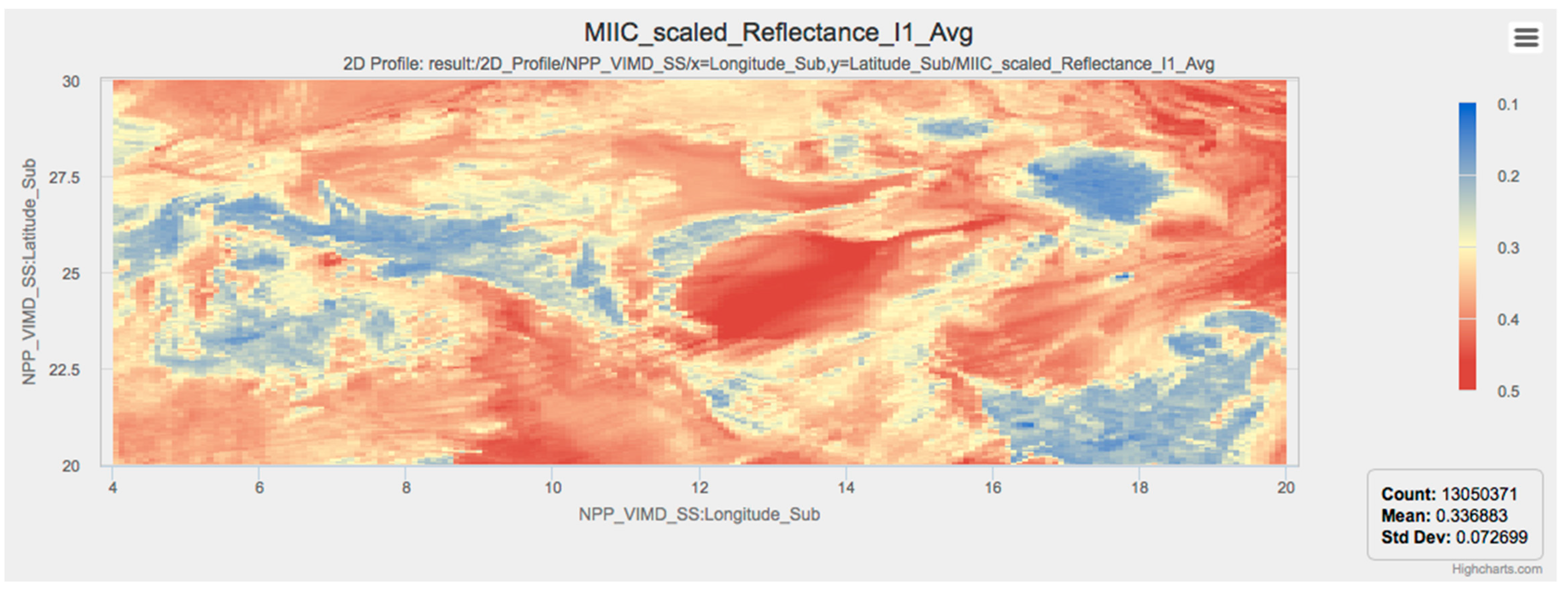
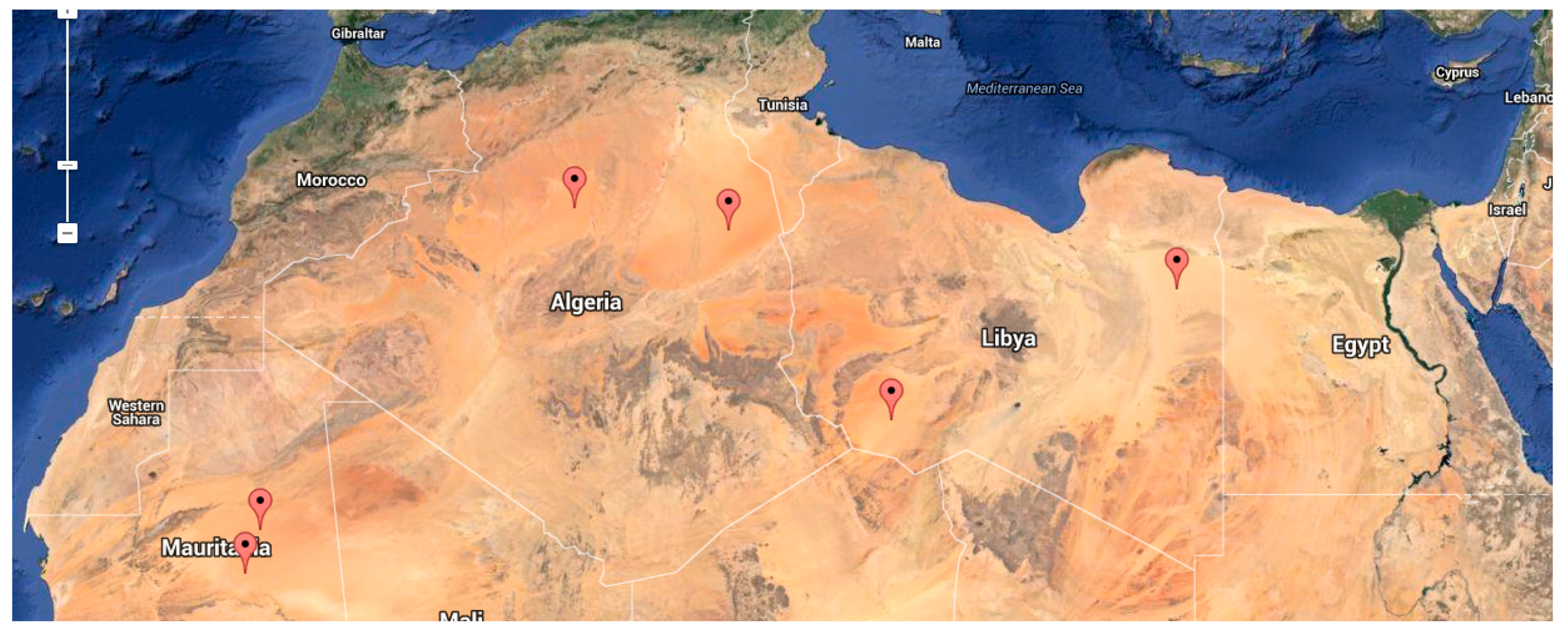

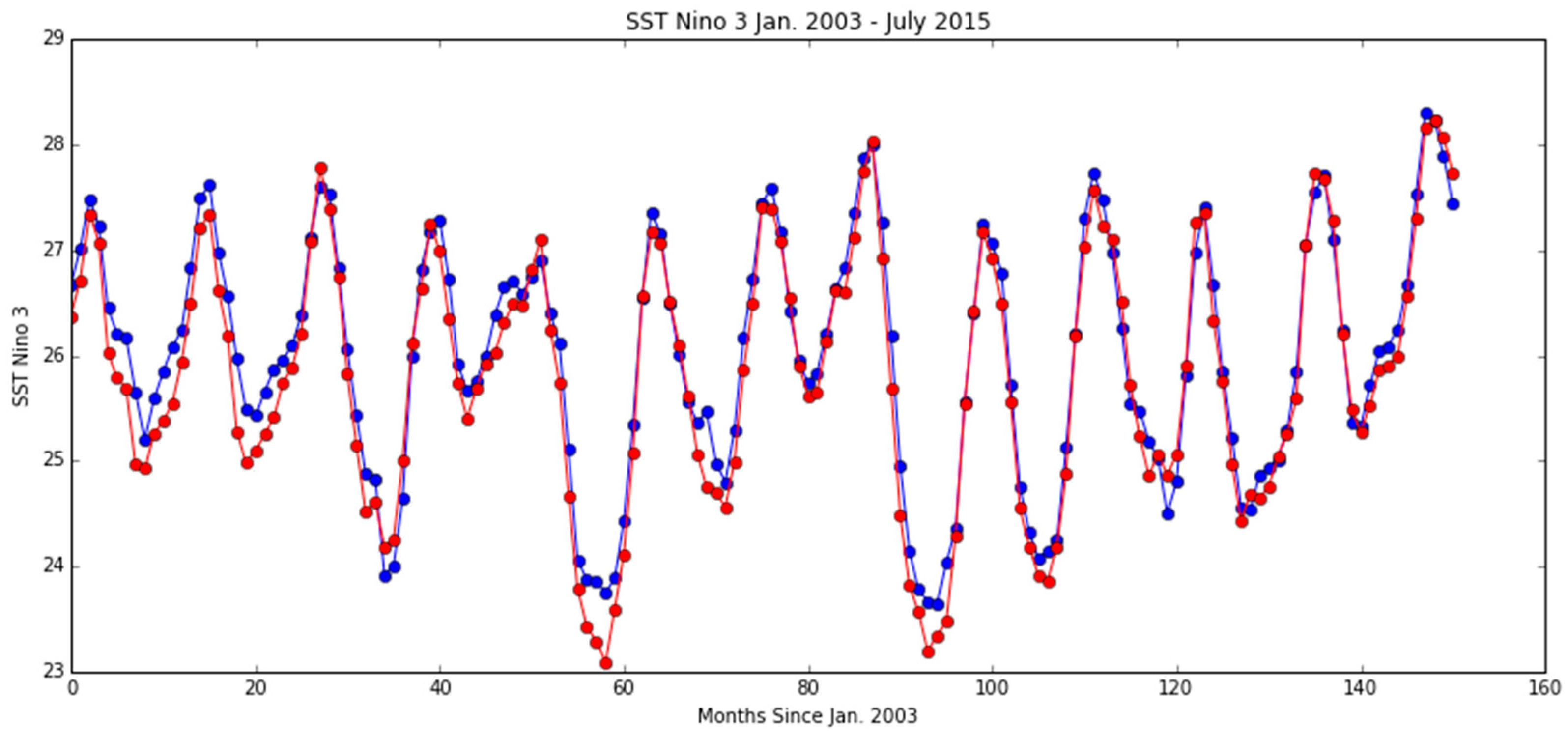
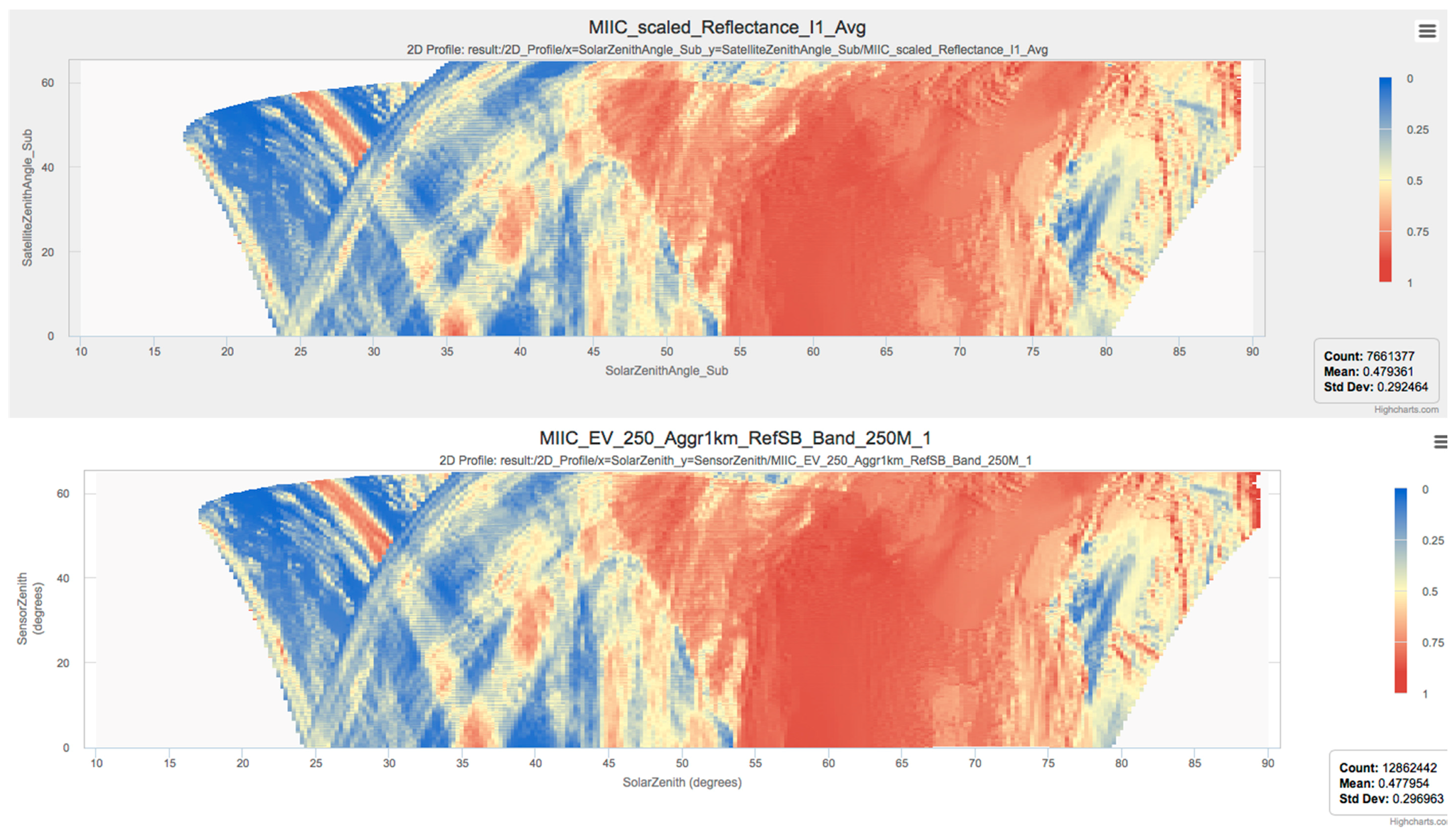

| SC1 | SC1 Altitude (km) | SC2 | SC2 Altitude (km) | SC1 (Orbits/Day) | SC2 (Orbits/Day) | Crossing Period (Days) |
|---|---|---|---|---|---|---|
| Aqua | 705 | Envisat | 800 | 14.57 | 14.32 | 4.0 |
| Aqua | 705 | SNPP | 824 | 14.57 | 14.19 | 2.6 |
| METOP-A | 820 | SNPP | 824 | 14.22 | 14.19 | 33.3 |
| ISS | 404 | SNPP | 824 | 15.55 | 14.19 | 0.74 |
| EP Parameter | Description |
|---|---|
| razmax ( | Maximum allowable difference in relative azimuth angles |
| Time increment (seconds) for orbit propagation steps (default = 1) | |
| referenceSwath | Swath width (degrees) of reference instrument |
| targetSwath | Swath width (degrees) of target instrument |
| szmax ( | Maximum allowable solar zenith value for any observation |
| twin | Maximum allowable time difference (minutes) between observations |
| vzmax ( | Maximum allowable difference in viewing zenith angles |
© by the US Government; licensee MDPI, Basel, Switzerland. This article is an open access article distributed under the terms and conditions of the Creative Commons Attribution (CC-BY) license (http://creativecommons.org/licenses/by/4.0/).
Share and Cite
Currey, C.; Bartle, A.; Lukashin, C.; Roithmayr, C.; Gallagher, J. Multi-Instrument Inter-Calibration (MIIC) System. Remote Sens. 2016, 8, 902. https://doi.org/10.3390/rs8110902
Currey C, Bartle A, Lukashin C, Roithmayr C, Gallagher J. Multi-Instrument Inter-Calibration (MIIC) System. Remote Sensing. 2016; 8(11):902. https://doi.org/10.3390/rs8110902
Chicago/Turabian StyleCurrey, Chris, Aron Bartle, Constantine Lukashin, Carlos Roithmayr, and James Gallagher. 2016. "Multi-Instrument Inter-Calibration (MIIC) System" Remote Sensing 8, no. 11: 902. https://doi.org/10.3390/rs8110902






